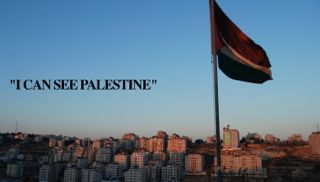In developing countries, land is of fundamental importance to economic activity and development: it is often the most common means of storing wealth and a powerful economic asset; it provides a foundation for economic activity in sectors as varied as agriculture, industries, housing and tourism; it is also a key factor in the functioning of market (e.g. credit), and non-market institutions (e.g. local governments). In the West Bank, land takes on a particular significance, as economic activity has been stifled by the ongoing conflict; and as much of the land area is inaccessible due to Israeli restrictions on movement of people and access to natural resources. This policy note aims at analyzing the channels through which land access restrictions and market distortions constrain productive and public sector investment, and trace their effects on the development of key economic sectors.
The 1995 Oslo interim agreement split the West Bank and Gaza into three Areas A, B, and C, with different security and administrative arrangements and authorities.1 This note focuses on the West Bank, where this territorial fragmentation continues to have developmental implications. The land area controlled by the Palestinians (Area A corresponding to all major population centers and Area B encompassing most rural centers) is fragmented into a multitude of enclaves, with a regime of movement restrictions between them. These enclaves are surrounded by Area C, which covers the entire remaining area and is the only contiguous area of the West Bank. Area C is under full control of the Israeli military for both security and civilian affairs related to territory, including land administration and planning. It is sparsely populated and underutilized (except by Israeli settlements and reserves), and holds the majority of the land (approximately 59%). East Jerusalem was not classified as Area A, B or C in the Oslo interim agreement and its status was to be resolved in final status negotiations.
This allocation, which establishes the Palestinian administration over most of the populated areas and gives it limited control over natural resources and agricultural lands, was meant to be only transitory, with the Palestinian Authority expected to assume control over an increasingly larger share of Area C. However little territory has been transferred to PA control since the signing of the Oslo interim agreement, and this process has been completely frozen since 2000. As the Palestinian population grows and its resource and development needs increase, this long-lasting situation has become an increasingly severe constraint to economic activity.
The effects on the Palestinian economy of the current territorial distribution extend much beyond its most obvious manifestations. The physical access restrictions are the most visible, with 38% of the land area reserved by the Government of Israel to serve settlements and security objectives and a system of checkpoints, road closures, the Separation Barrier, and permit requirements for access that constrain movement of people and goods within and out of the West Bank. Recurrent destruction of trees, private homes and public infrastructure, as well as settlers’ encroachments on private land create a permanent state of insecurity that deters Palestinian investment in Area C. At the same time, the land use and planning regulations in effect in Area C have less obvious consequences but are no less detrimental to Palestinian economic development. These regulations tend to limit development within the confines of existing villages, with too little suitable space for demographic growth, causing irrational land use and unsound environmental management. The construction permit system slows down or halts altogether most construction. And the land administration system does not adequately protect the property rights of the Palestinian people, a source of uncertainty incompatible with investments and growth.
To download the full report please click below:
| Attachment | Size |
|---|---|
| WB_Land_20082310.pdf | 552.3 KB |
The World Bank – Social and Economic Development Group - April 30, 2008 - Back to Resources Page
Did we miss something?
Click here to suggest a state building resource to be added to our fast-growing archive!
















